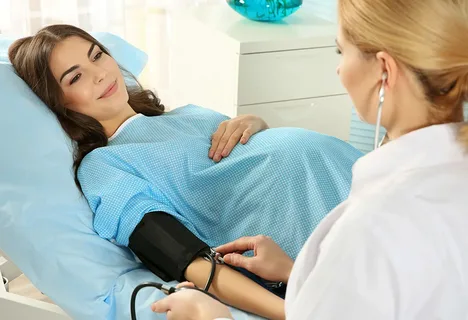Endometriosis is a chronic and often painful condition that affects millions of women worldwide. This article explores the symptoms, diagnosis, and treatment options for Obstetrics and Gynaecology, providing valuable insights for those affected by this condition.
What is Endometriosis?
Endometriosis occurs when tissue similar to the lining of the uterus (endometrium) grows outside the uterus. This can cause inflammation, scar tissue, and adhesions, leading to various symptoms and complications. While the exact cause of endometriosis remains unknown, factors such as genetics, immune system issues, and hormonal influences are believed to play a role.
Common Symptoms of Endometriosis
The symptoms of endometriosis can vary widely among individuals, and some may experience severe symptoms while others have mild or no symptoms. Common symptoms include:
1. Pelvic Pain
One of the hallmark symptoms of endometriosis is chronic pelvic pain, often associated with menstrual periods. This pain may start before menstruation and last throughout the period, and can also occur during or after sexual intercourse.
2. Heavy Menstrual Bleeding
Women with endometriosis may experience heavy menstrual bleeding (menorrhagia) or bleeding between periods. This can lead to anemia over time.
3. Painful Periods
Dysmenorrhea, or painful periods, is common in those with endometriosis. The pain can be severe and may not respond well to over-the-counter pain relief medications.
4. Infertility
Endometriosis can be a significant factor in infertility. Many women diagnosed with endometriosis discover their condition while seeking treatment for infertility.
5. Gastrointestinal Symptoms
Endometriosis can also affect the digestive system, leading to symptoms such as bloating, diarrhea, constipation, and nausea, particularly during menstruation.
6. Fatigue
Chronic fatigue is another symptom often reported by those with endometriosis, possibly due to the ongoing pain and hormonal imbalances associated with the condition.
Diagnosing Endometriosis
Diagnosing endometriosis can be challenging due to the variability of symptoms and their overlap with other conditions. The diagnostic process typically involves several steps:
1. Medical History and Symptom Review
A healthcare provider will begin by taking a detailed medical history, discussing symptoms, menstrual cycle patterns, and any previous treatments or surgeries.
2. Physical Examination
A pelvic exam may be conducted to check for cysts or scars behind the uterus. However, many cases of endometriosis cannot be detected during this examination.
3. Imaging Tests
Imaging tests such as ultrasounds or magnetic resonance imaging (MRI) can help visualize endometriosis lesions and cysts, but they are not definitive for diagnosis.
4. Laparoscopy
The most reliable way to diagnose endometriosis is through a laparoscopic procedure. This minimally invasive surgery involves inserting a camera into the pelvic cavity, allowing doctors to view and potentially biopsy any endometrial tissue outside the uterus.
Treatment Options for Endometriosis
Treatment for endometriosis aims to relieve symptoms and improve quality of life. Options vary based on the severity of the condition, individual symptoms, and whether the patient desires to become pregnant.
1. Pain Management
Over-the-counter pain relief medications, such as nonsteroidal anti-inflammatory drugs (NSAIDs), are often the first line of treatment for managing pain associated with endometriosis.
2. Hormonal Therapy
Hormonal treatments can help regulate or suppress the menstrual cycle, reducing or eliminating pain. Common options include:
- Birth Control Pills: Regulate hormones and can help reduce or eliminate menstruation.
- Progestin Therapy: These medications can help to shrink endometrial tissue.
- Gonadotropin-Releasing Hormone (GnRH) Agonists: Medications that induce temporary menopause-like symptoms to reduce the growth of endometrial tissue.
3. Surgery
For women with severe symptoms or those who want to conceive, surgical options may be recommended. Surgery can involve:
- Laparoscopic Surgery: To remove endometrial tissue and adhesions.
- Hysterectomy: In severe cases, the removal of the uterus may be considered, especially for women who no longer wish to conceive.
4. Lifestyle and Home Remedies
Some women find relief through lifestyle changes, including:
- Dietary Adjustments: A diet rich in fruits, vegetables, and whole grains may help reduce inflammation.
- Exercise: Regular physical activity can help alleviate pain and improve overall well-being.
- Stress Management: Techniques such as yoga, meditation, and deep-breathing exercises can aid in managing stress and reducing pain.
5. Alternative Therapies
Some women explore alternative therapies, such as acupuncture, chiropractic treatment, or herbal supplements. While these may provide relief for some, it’s essential to discuss any alternative treatments with a healthcare provider to ensure safety and effectiveness.
Conclusion
Endometriosis is a complex condition that affects many women, often leading to significant pain and complications. Understanding its symptoms, diagnostic methods, and treatment options is crucial for managing this condition effectively. If you suspect you have endometriosis, consult with a healthcare professional for an accurate diagnosis and personalized treatment plan. Early intervention can lead to better management of symptoms and improved quality of life.



